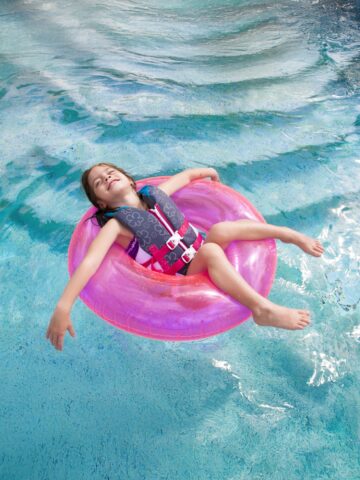Recreational vehicles, or as they are more commonly known as, RVs, have always been a popular form of travel for many families. In the past year, their popularity have increased due to flight travel limitations during the COVID-19 pandemic.
While road tripping in an RV can be exciting for the whole family, it is important that safety should still be top-of-mind for all. Due to the size of RVs, it is often assumed these vehicles meet the same safety standards as a bus.
“This is not true,” says Amy Frias, health educator at CHOC and Safe Kids Orange County coordinator. “RVs are not ideal for transporting children.”
What are safety risks of traveling in RVs?
- Projectiles: Loose objects, including cabinetry, can pose a potential danger when the vehicle is in motion. Also, people can trip, fall or be launched when the RV is in motion.
- Lack of seat belts: In most RVs, the only federally approved seat belts are located at the driver and passenger seat. Children – and even adults – should not sit on side- or rear-facing seats when the vehicle is in motion.
- Car seat installation: Car seats and booster seats are only approved for forward-facing seats in vehicles that have a federally-approved seat belt or car seat (lower anchor) attachment. They should never be placed in a vehicle seat that faces backwards or sideways.
- Distracted drivers: A driver of any vehicle must always focus on the road, but especially so while driving an RV. Recreational vehicles maneuver differently than a standard car and require ample time to stop and avoid road hazards.
“Traveling with kids can be an exciting time to create new memories. But parents should remember that safety doesn’t go on vacation when you do.”
Amy Frias, CHOC health educator
How can families stay safe in RVs?
- Choose an RV that has safe-seating arrangements with a lap and shoulder (type 2) belt and meets the Federal Motor Vehicle Safety Standard 208: Children ages 8 or older, or 4 feet 9 inches in height may use the vehicle seat belt if it fits properly with the lap belt low on the hips and touching the upper thighs, and the shoulder belt crossing the center of the chest. If children are not tall enough, they should be in a properly installed car seat or booster seat.
- Drive a second car: When there are not enough safe-seating positions for everyone in the RV, the safest option is to ride in a separate car. Children in this car who are younger than age 8 must be properly buckled into a car seat or booster in the back seat. Children younger than age 2 must be in a rear-facing car seat unless they weigh 40 pounds or more and/or are 40 inches tall or more.
- Tow the RV behind a car: This way, every person traveling can be safely seated with a federally-approved seat belt – and everyone can ride together.
“Traveling with kids can be an exciting time to create new memories,” Amy says. “But parents should remember that safety doesn’t go on vacation when you do.”
Get more expert health advice delivered to your inbox monthly by subscribing to the KidsHealth newsletter here.
Get more safety and injury prevention tips from CHOC experts
More children are affected by injuries than all other childhood illnesses and diseases combined. Most of these injuries are predictable and preventable. Here’s how to keep your child safe.





